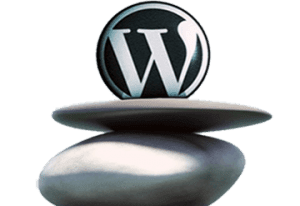Choosing WordPress CMS
A well-structured corporate website requires complete development. WordPress (WP) is an ideal option for SMEs and individuals seeking cost-effective content management with an intuitive back-office.
Despite its simplicity, WordPress development remains complex. Since its 2003 launch, it has evolved with powerful framework builders like:
- Classic Editor (simple, rich content management)
- Gutenberg (default, modern block editor)
- Divi (intuitive visual builder)
- Elementor (versatile, mid-level complexity)
- WPBakery (professional, advanced, object oriented)
While WordPress offers flexibility and scalability, proficient development requires knowledge of HTML, CSS, JavaScript, and PHP for customisation and SEO optimisation.
A professional WordPress developer ensures:
✔ Optimised loading speed (minimising heavy JS effects)
✔ Well-structured SEO for higher search rankings
✔ Secure, regularly updated websites
WordPress is open-source, highly customizable, and widely supported by a global community, but it requires ongoing maintenance to remain secure and functional.
For businesses seeking independence in content management, WordPress is a cost-effective and powerful solution.
WordPress: A Versatile and Evolving CMS
WordPress has evolved significantly, especially in its Back-Office CMS functionalities, offering elegant design, high customizability, and user-friendly management. It remains a top choice for blogs, business websites, and e-commerce platforms.
Launched in 2003, WordPress has grown into one of the world’s largest and most stable open-source web tools, backed by a vast developer community. Released under GPLv2+, it seamlessly integrates aesthetics, web standards, and usability.
For users with little coding experience, WordPress provides an accessible and cost-effective way to manage dynamic content. However, achieving optimal performance may require advanced front-end development skills and proficiency in PHP, MySQL, HTML, CSS, and JavaScript.
Regular updates, maintenance, and security monitoring are essential to keep WordPress sites running smoothly. The community continuously enhances the core software, offering a vast collection of themes and plugins for customization.
WordPress also fosters a strong community, hosting WordCamps with industry experts. For more insights, visit WordPress TV.
Security in WordPress
With millions of websites running on WordPress, it remains a prime target for cyber threats. While the WordPress community actively enhances security, XSS attacks, database injections, and botnet intrusions are common risks.
🔹 Regular updates of the core system, themes, and plugins are essential but not sufficient.
🔹 Hosting security and preventive measures (firewalls, secure credentials, backups) are crucial.
🔹 Developers should immediately implement the most appropriate security best practices.
Ongoing maintenance & monitoring are imperative for a secure WordPress site.
To enhance the security of your WordPress website, consider implementing the following best practices:
- Keep Software Updated:
Regularly update WordPress core, themes, and plugins to ensure you have the latest security patches. - Use Strong Passwords and Two-Factor Authentication (2FA):
Use complex passwords and enable 2FA to add an extra layer of security. - Limit Login Attempts:
Restrict the number of login attempts to prevent brute force attacks. - Install Security Plugins:
Utilise reputable security plugins to monitor and protect your site from malicious activities. - Regular Backups:
Schedule regular backups to ensure you can restore your site in case of a security breach. - For more comprehensive guidance, refer to the WordPress Security Handbook.
By diligently applying these measures, you can significantly enhance your WordPress site’s security posture.
WordPress websites face various security threats, including:
- Cross-Site Scripting (XSS)
- SQL Injections
- PHP Malicious Code Injection
- Filesman Backdoor
- .htaccess Exploits
- Botnet Login Attacks
- And many more vulnerabilities to come.
To ensure optimal security, WP developers must implement preventive measures, apply regular patches and updates, and monitor both server-side and frontend vulnerabilities. Outdated PHP versions can lead to performance and security risks, while poorly maintained plugins may introduce critical vulnerabilities.
At DIGITALABS, we provide secure hosting, consulting, maintenance, and proactive monitoring for all developed sites ensuring reliable protection against evolving cyber threats.
All-Inclusive WordPress Hosting Solution
Hosting your WordPress CMS with DIGTALABS at Infomaniak has many advantages:
✅ Automatic Security Patches & Notifications – Stay protected with real-time updates.
✅ Optimised for Email Marketing & Social Media – Seamless integration for outreach.
✅ Reliable Backup & Recovery – Secure your data with automated backups.
✅ Unlimited Databases & Traffic – No restrictions on your website’s growth.
✅ Let’s Encrypt HTTPS (SSL/TLS) or your own Certificate – Ensure trust and data encryption.
✅ Advanced Backend Management – Full control over SSH, Cron, PHP, Apache, IPs, and Ports.
✅ Security Management – Debugs, Version control, Back-End performance and Front-End customisation.
A robust, secure, and feature-rich hosting solution tailored for WordPress users.
Wordpress Feeds for Mobile Apps
WordPress offers built-in solutions and high-quality plugins to create elegant mobile apps, making it an excellent choice for small projects. Whether you run a small business, magazine, or blog, integrating a PWA (Progressive Web App) or RWA (Responsive Web App) alongside your responsive site can enhance accessibility.
If you’re uncertain about budget constraints or the long-term viability of your project, optimizing your site’s responsive version is a practical alternative to investing in a native iOS / Android App.
While coding knowledge isn’t required, it’s important to note that only a PWA can be achieved using REST architecture, enabling real-time synchronization of posts and images. However, this is not the same as a native app.
Developing a native iOS or Android application is a more complex endeavor, requiring advanced development skills, continuous updates, and paid developer accounts on Apple and Google platforms.
WordPress Best Practices in a Nutshell
- Understand WordPress structures and hierarchies
- Choose the right tools
- Automate wherever possible
- Focus on maintainability
- Develop for extendability and scalability
- Prioritise security
- Optimise for performance
WordPress Developer Resources










